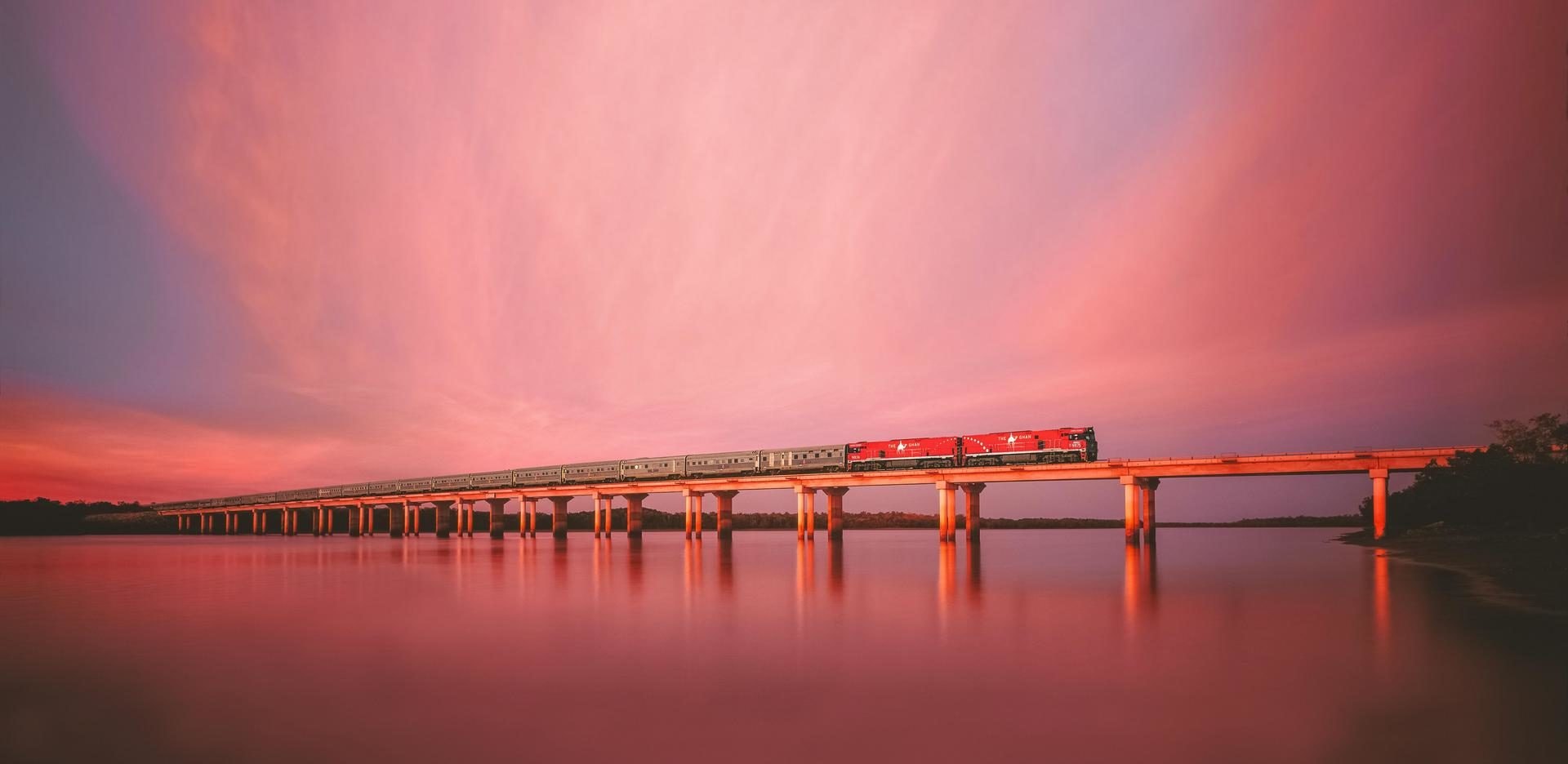
Explore Australia’s sacred lands and ancient cultures
The Outback’s Red Centre in the Northern Territory is an extraordinary landscape of desert plains, weathered mountain ranges, rocky gorges, and some of the most sacred Indigenous sites—it is considered the heart of the Outback.
WORDS Cheryl Monkhouse
Why is it called the Red Centre? The region gets its name from the iconic red soil, which is millions of years old. Scientists believe that the red colouring results from high levels of iron oxidising in the soil, and believe the hue is still developing and changing even now.
This part of the country has so many wonderful things to see and do and we’ve highlighted some of the top things you’ll find in this spiritual and sacred region:
Western MacDonnell Ranges (Tjoritja):
Located to the west of Alice Springs, these expansive ranges encompass an ancient landscape sculpted over time by the elements. Many of its features are quite significant to the Arrernte people, including the rich Ochre Pits, which supply important ochre pigments for art and textiles. If you’re lucky, you might spot a rare Peregrine Falcon or encounter other unique plants and wildlife.
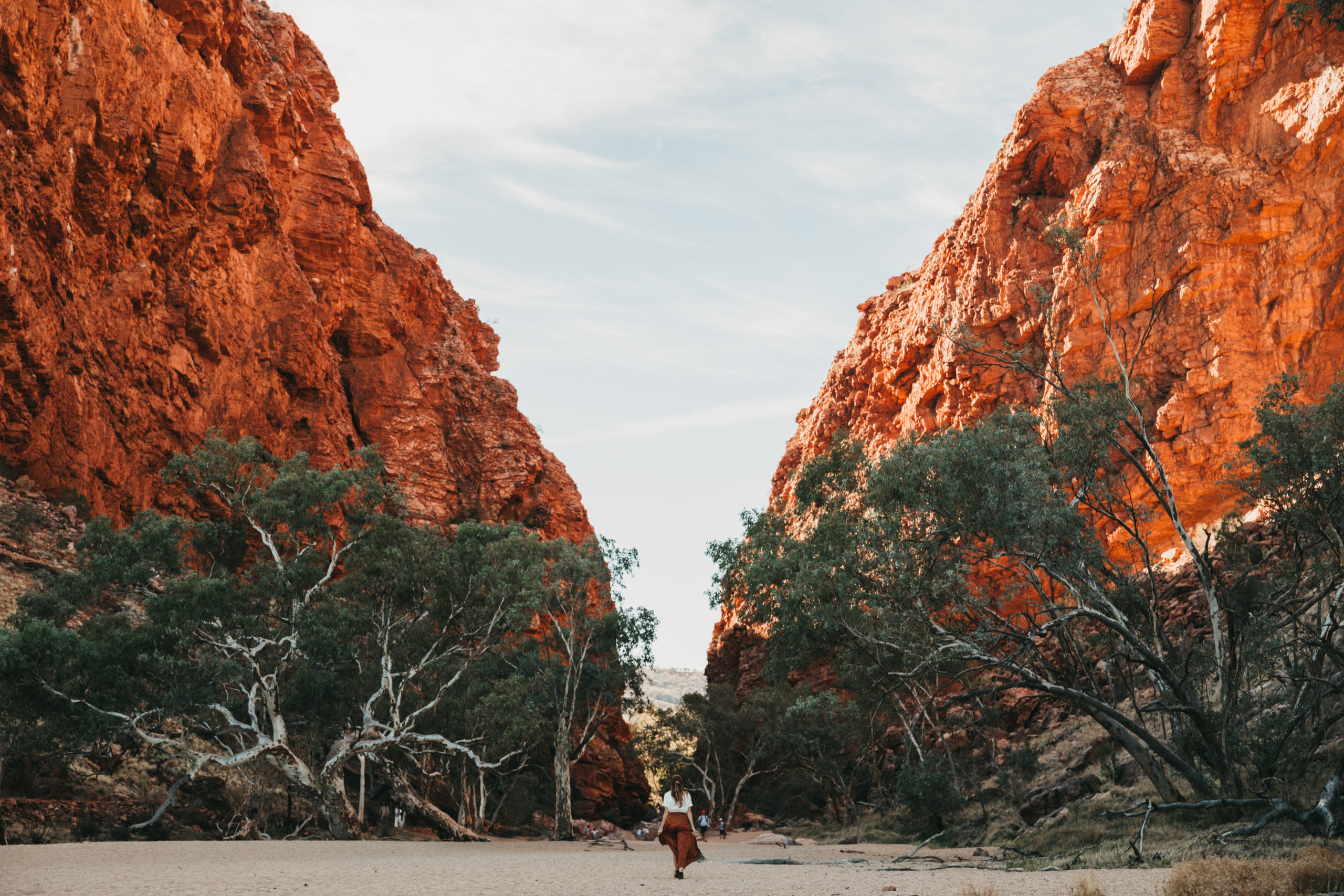
Nitmiluk Gorge:
Sitting 30km north-east of Katherine, Nitmiluk National Park covers a vast territory, including 13 impressive gorges carved from the ancient sandstone terrain, which is home to the Jawoyn people. It is also home to numerous swimming holes, waterfalls, and stunning examples of Aboriginal rock art, as well as both freshwater and saltwater crocodiles.
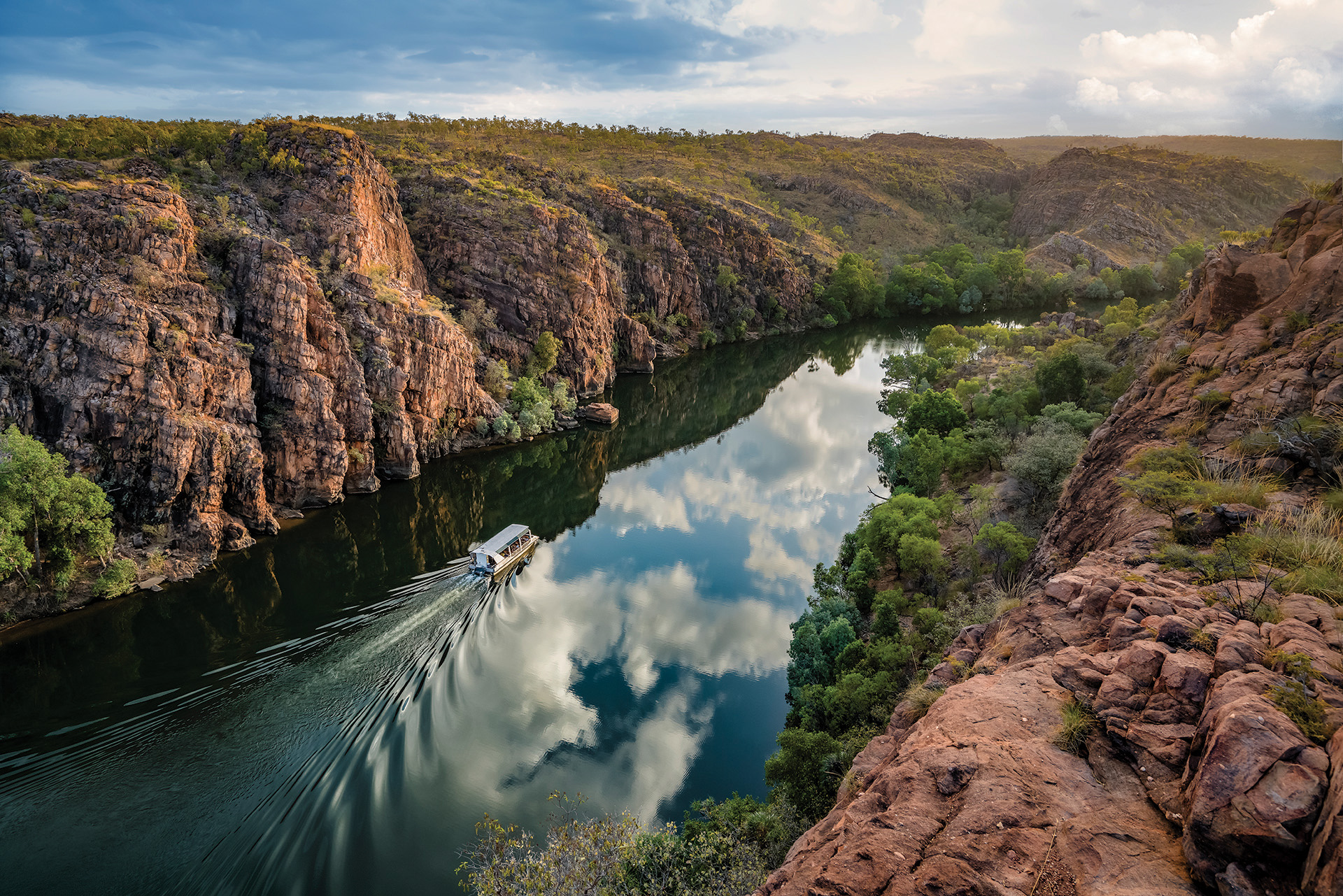
Kings Canyon:
You’ll feel on top of the world as you walk along the 300-metre-high towering red rock cliffs of the canyon’s rim walk while taking in views of the forest of palms below. For a more moderate pace, the canyon’s base walk takes you through shaded riverbeds and palms. There are several walking trails, 4×4 tracks and camel tours to help you experience and explore the spectacular area.
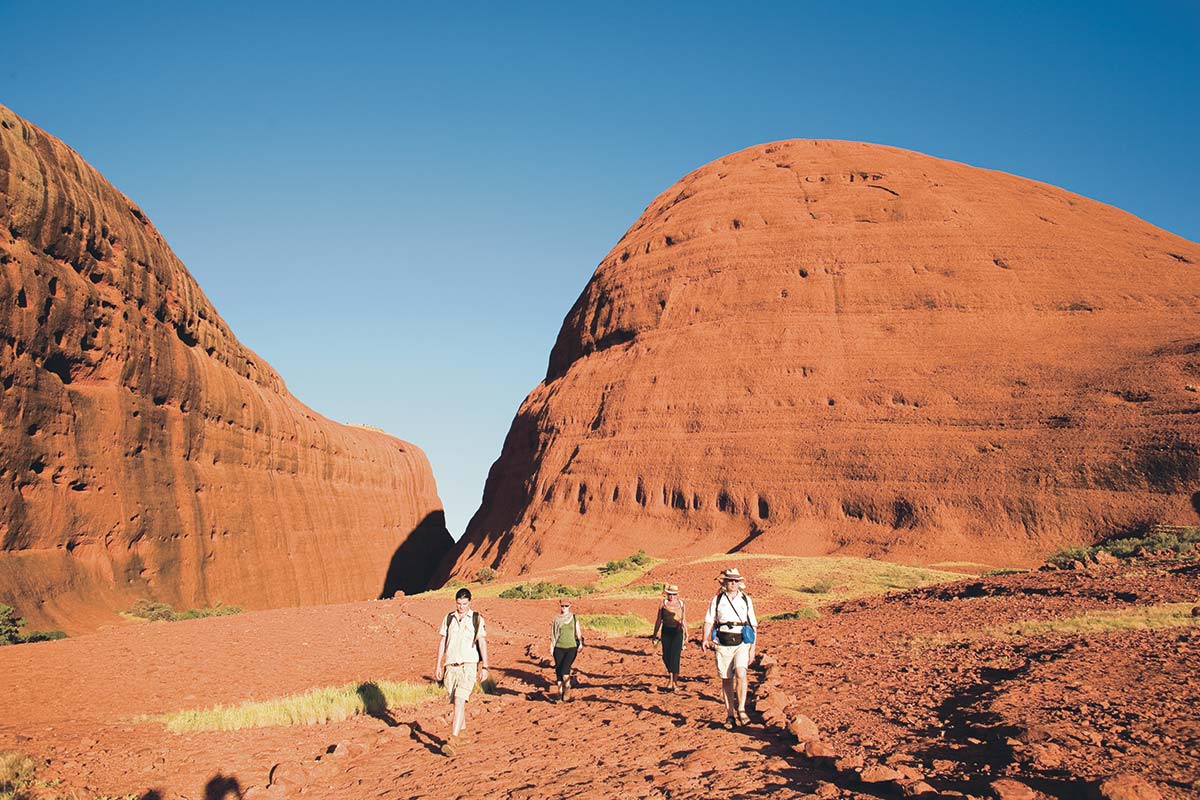
Mount Conner:
Known as one of the ‘Three Giants’ of the desert, Mt. Conner is considered the Red Centre’s hidden gem. This flat-topped monolith, estimated to be 500 million years old, has an unmistakable horseshoe shape, but from afar is often mistaken for Uluru. Located on a cattle station, this area is home to kangaroo, rock wallabies, and a rich bird and reptile population.
Uluru:
The true heart of the Red Centre and one of the world’s largest and most famous rocks, Uluru is home to this sacred land’s rich, ancient history for the Anangu people—it is a living, breathing cultural landscape. You can explore the base on foot via a guided or a self-guided tour. We recommend making this trek with an experienced guide who will help you explore its incredible history and sacred meaning.
In the evening make sure to check out the ‘Field of Light’, a global phenomenon by artist Bruce Munro, as it comes to life before your eyes—envision a sea of lights with Uluru silhouetted in the distance. You’ll also want to take in the ‘Sounds of Silence’ outdoor dining experience under the stars, including a presentation by the resident star talker who decodes the stellar southern night sky.
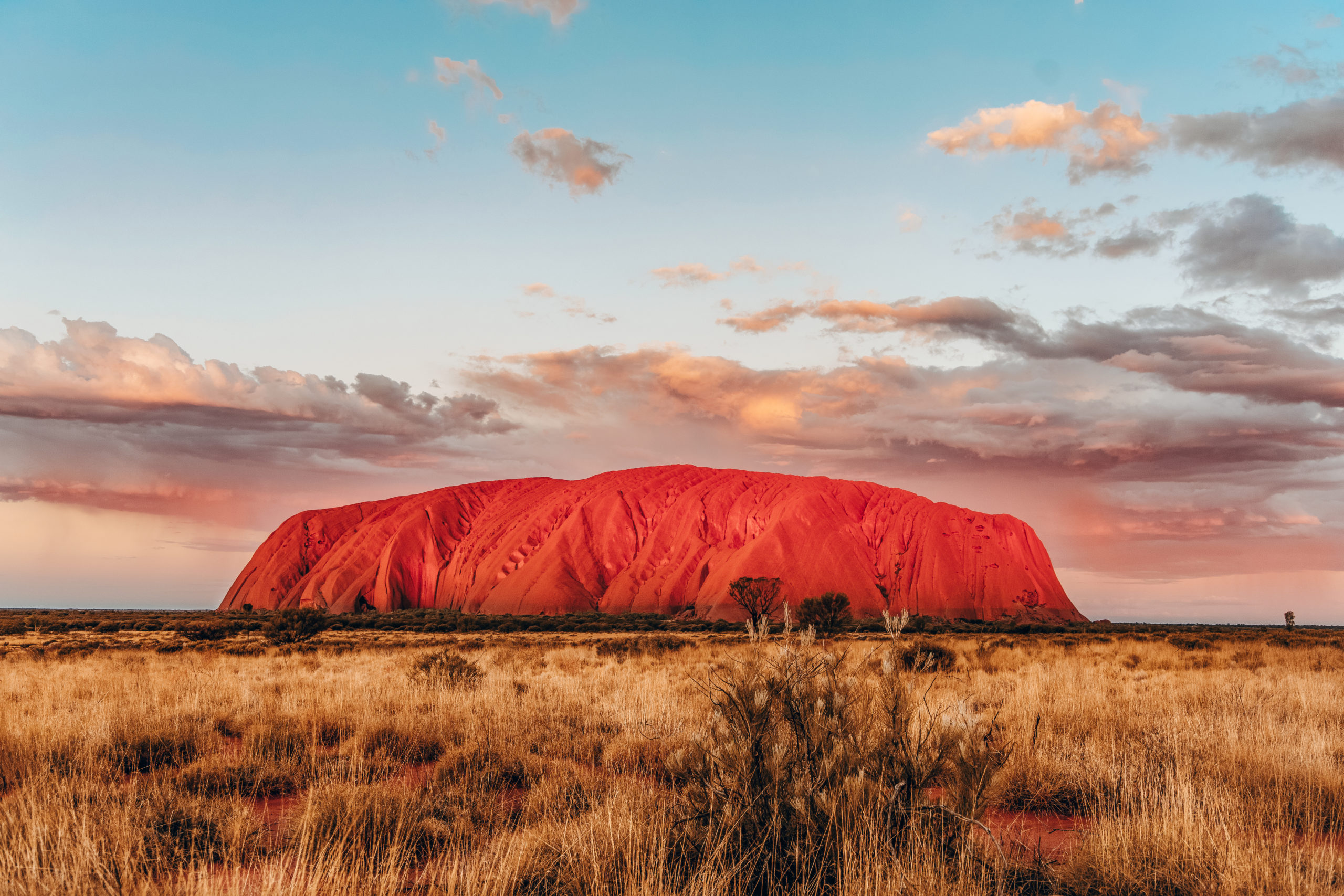
Kata Tjuta (the Olgas):
While you meander around these intriguing dome-shaped rock formations you’ll want to learn about the region’s rich spiritual history and fascinating Dreamtime stories. Meaning ‘many heads’, Kata Tjuta is sacred to the local Anangu people and is a living cultural landscape where earth and memories exist as one.
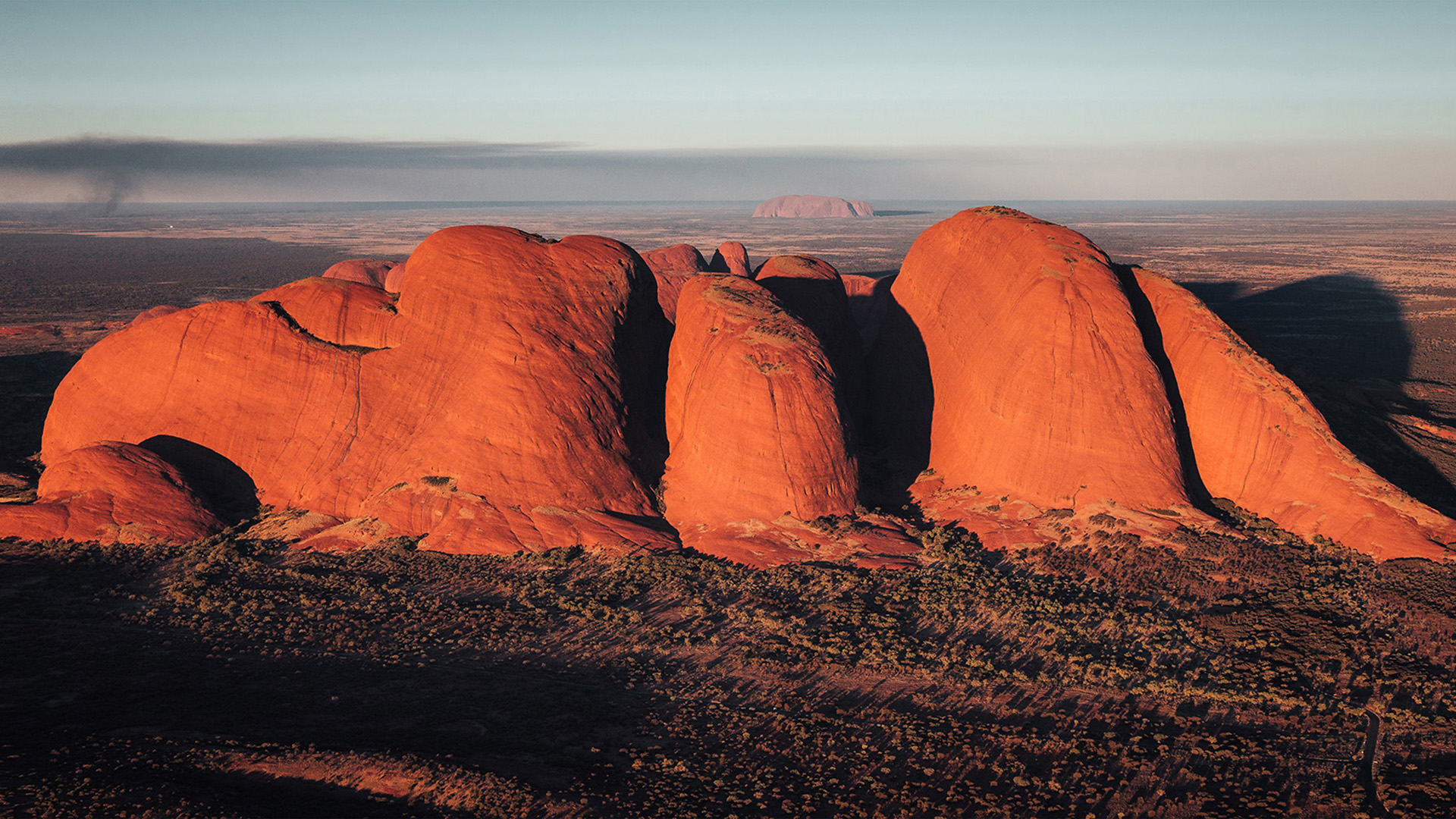
Kakadu National Park:
One of only 37 UNESCO World Heritage Sites around the world to receive a dual listing for its cultural landscape and natural values, Kakadu lies 170km southeast of Darwin, and has lot to see and do in its 19 square kilometres. Nourlangie is a 1.5km loop trail that reveals the special friendship the Bininj/Mungguy people have with the area—through 20,000-year rock art stories about the Creation Ancestors, native animals, and early days of contact with outsiders. Most visitors like to stop at Gunlom Falls. Made famous as a filming spot for Crocodile Dundee, its 85-metre drop, tranquil plunge pool and sandy beach will not disappoint.
Litchfield National Park:
Choose from lush monsoon forests, magnetic termite mounds, unusual rock formations, and waterfalls, or see them all—this more compact park at 1.4k square kilometres offers something for everyone. It has several fantastic waterfalls, including the Bluey Rockholes, a series of waterfalls and rock ponds with crystal clear water surrounded by native foliage, and Tolmer Falls, a dramatic plunge waterfall with a drop of over 100 metres to crystal waters below.
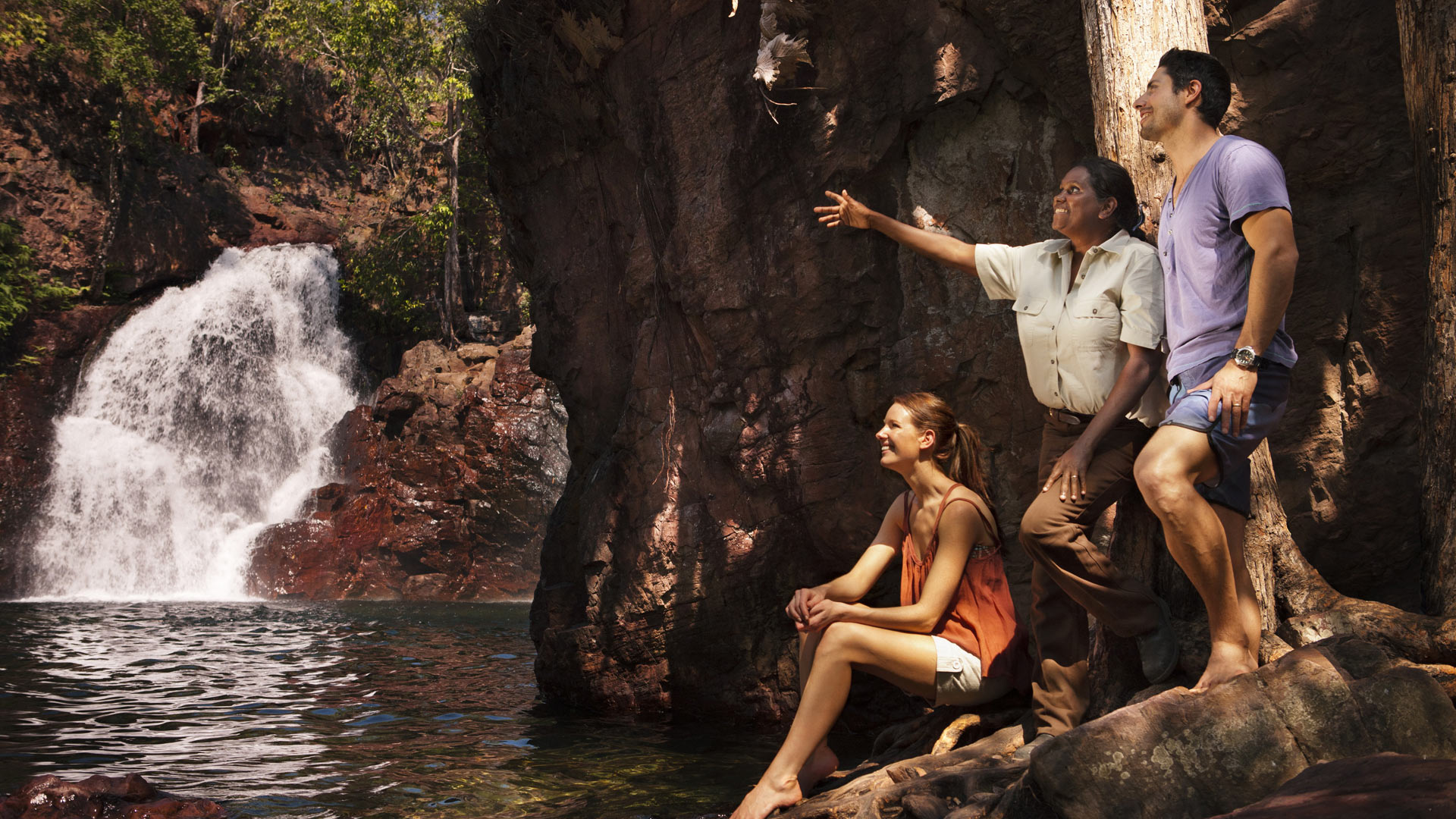
If your dream is to see the best the Outback has to offer, and are looking to immerse yourself in the heart and soul of it with incredible hands-on experiences and adventures, we have some exciting itineraries to share. Learn about the Ultimate Territory Tour and Red Centre Spectacular that ensure you’ll see, do and experience everything you want and more.


